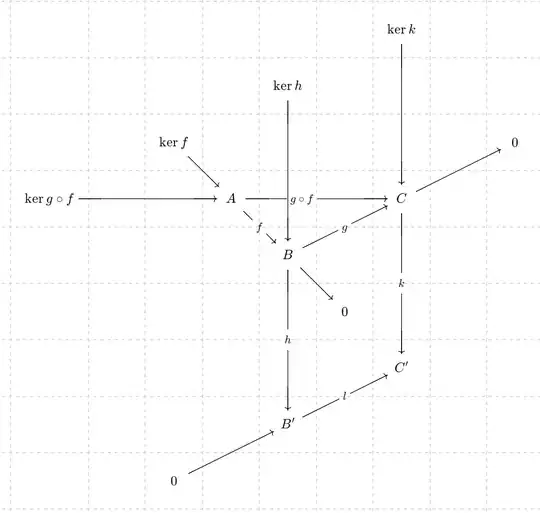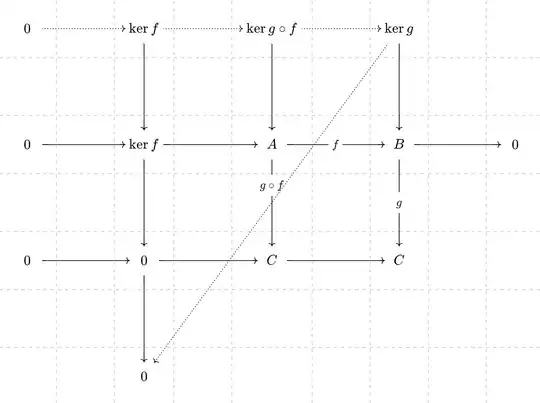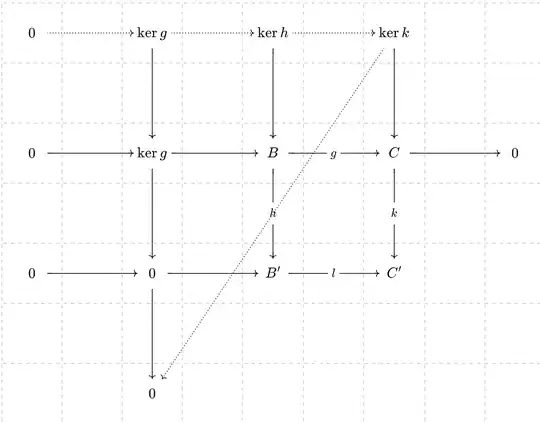I recently had need of the following fact (in the category of abelian groups, but I'm pretty sure it holds for all abelian categories): given a commutative diagram of the form
 (quiver link), thus $k \circ g = l \circ h$, $f$ and $g$ are epimorphisms, and $l$ is a monomorphism, there is a canonical long exact sequence
$$ 0 \to \ker f \to \ker g \circ f \to \ker h \to \ker k \to 0$$
defined in a natural fashion. Verifying that this fact is a routine (but tedious) diagram chase. Given the similarity to the snake lemma, I was initially certain that this fact was somehow a corollary of the snake lemma, but I was only able to use the snake lemma to establish exactness at $\ker k$ and nowhere else. Can the entirety of this sequence be established from the snake lemma, or one of the other canonical diagram chase lemmas?
(quiver link), thus $k \circ g = l \circ h$, $f$ and $g$ are epimorphisms, and $l$ is a monomorphism, there is a canonical long exact sequence
$$ 0 \to \ker f \to \ker g \circ f \to \ker h \to \ker k \to 0$$
defined in a natural fashion. Verifying that this fact is a routine (but tedious) diagram chase. Given the similarity to the snake lemma, I was initially certain that this fact was somehow a corollary of the snake lemma, but I was only able to use the snake lemma to establish exactness at $\ker k$ and nowhere else. Can the entirety of this sequence be established from the snake lemma, or one of the other canonical diagram chase lemmas?
EDIT: As noted in comments, the claim follows in fact from splicing together two applications of the snake lemma, namely
and

